The 1980s saw many strong trends that left fond memories for so many people. Possibly the most memorable thing from the decade includes the cartoon connection to toylines. Toylines connected to cartoons showed extreme popularity during the 80s with many different animated series, action figures, playsets, and more. Many of these cartoons and toys touched the very heart of toy and animation culture, making a lasting impact. Today, many people remember their favorite toys and series as they get nostalgia from this iconic time period. The incredibly detailed storylines of the characters made the toylines that much more popular and vice versa. Toy companies perfected their marketing strategies during this time in order to get the most out of the 1980s cartoon connection. This proved to work exceedingly well as the popularity increased with the desire for more toys and cartoons.
Why did all my 1980s toys have an animated series connected to it? What made the 1980s so popular for cartoons and toys? What shifted after the 1980s that made toys and animated series tie-ins less frequent? Follow along in our blog as we answer these questions through the 1980s cartoon connection. See how toylines from the decade were marketed along with the cartoon connection craze.
Join Us As We Dive into the 1980s Cartoon Connection
Join us as we mention the reason the 1980s showed the surge of toys with cartoon connections. We will go through the changing of laws and how toy companies responded. We will also go into the genius marketing strategy and the impact on the toy industry as well as on animation. The end of the era with it’s lasting legacy takes a place on our blog before diving into some of the most popular cartoons and toylines of the decade.
Legalization of Toy-Based Cartoons
Before 1981, the Federal Communications Commission (FCC) restricted toy companies from creating cartoon tie-ins specifically for promoting their toys. However with deregulation in 1981 releasing this restriction, companies began to market as much as they could specifically to children. Toy companies especially took this advantage as they began utilizing this new availability to create shows solely to promote their products. These animated shows essentially took place as elongated commercials for toys, yet with awesome storylines and consistently new characters. The availability to toy companies in the 80s led to an incredible surge of marketing to children as well as the undeniable impact on the entire world.
Powerful Marketing Strategy
The powerful marketing strategy of partnering with animation studios to promote both the toys and the cartoons proved to create the intense craze for children in the 1980s. With the shows used as practically extended advertisements for the toys, toy sales went through the roof along with the viewing of the cartoons. Instead of relying only on traditional commercials, toy companies and animation studios put together shows that children loved to watch, making each kid desire the corresponding toys. These cartoons also began shifting from Saturday morning airings to weekday afternoons. This gave children more exposure to these detailed, in depth character storylines. Children grew to love these characters, causing an emotional connection to them, only making the demand for the toys increase.
The Impact on Animation and the Toy Industry
Without a doubt, the 1980s cartoon connection caused a jump in the right direction for animation and toys. The expansion of figures, long lasting franchises, and emotional connections to fans all show to the incredible impact this caused. Since the shows developed long storylines with compelling character backgrounds and dramatic battles, children began to grow emotional connections with the characters. These shows created more characters, vehicles, and accessories for the storyline which increased children’s desire for each item in the show. Children wanted to own every character, increasing the demand for toy companies to expand their toylines. When the demand for more toys increased, toy companies began expanding their toylines. They created figures for each character, vehicles, accessories, and playsets from favorite scenes.
The connection between toys and animated shows also grew long lasting franchises. These cartoons and toys encouraged other releases to go along with the storylines. Many franchises include comic books, movies, video games, and more causing fans to grow in their love for the franchise. These other releases also help promote the original cartoons and toys as well as keeping the appreciation alive.
End of an Era and the Continuing Legacy
Although the 1990s and beyond still see cartoon releases with toys corresponding, the 1980s definitely showed the most impact. The 1980s, known as the golden age for cartoon and toy tie-ins, cannot match up with any other time period for this craze. The focus on action-packed, good vs. evil storylines made the era iconic. The cartoons and toylines showcased this specific genre causing many children to enjoy each franchise. The action and dramatic battles between good and evil characters caused fun play opportunities with the toys and children to grow to love their favorite characters on each side. The shift in entertainment strategies from the 1980s all still get used today, further proving the lasting impact. Toy companies and animation studios alike utilize their power to market together, influencing the entertainment and toy industries for generations to come.
The shift in cartoons and toys in the 80s also held a lasting impact on other forms of media. These shows and toys caused other media tie-ins, forever transforming the way companies strategize their marketing and connection to their audience. Continuations of the franchises from the 1980s hold an undeniable lasting impact on the culture. Many of these loved franchises rebooted in recent years. Companies continue to release more toys and cartoons along with movies, video games, and more. Fans come back for more, ensuring the lasting appreciation for each franchise. They get nostalgia from the original releases and go deeper into the franchise, becoming long time fans. These toys from the 80s today also show a huge impact toy collectors. Some of the most valuable and desired products come from these 80s toylines and cartoons, further increasing the popularity even decades later.
Popular 1980s Toylines with Cartoon Tie-Ins
Although many cartoons and toy lines showed great popularity during the 1980s, some rose to the very top. This next section of our blog will mention some of the most memorable toylines and cartoons of the decade. These include He-Man Masters of the Universe, G.I. Joe, Transformers, Thundercats, and Teenage Mutant Ninja Turtles. Each of these released as cartoons and toylines, holding a lasting impact on the industry even today. Continue following along in our blog with us as we mention these popular franchises originating from the 1980s cartoon connection.
He-Man Masters of the Universe (1982)
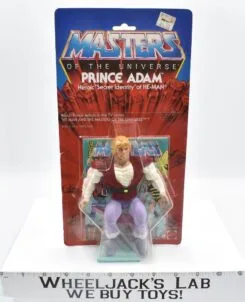
He-Man Masters of the Universe took place as the first significant toyline and cartoon combination to release in the 1980s. The toyline, originating in 1982, released by Mattel as they sought out to popularize a new line of toys with the competition of Star Wars at the time. These characters, developed by Rodger Sweet, drew direct inspiration from his love of bodybuilders. These detailed action figures showcased this appearance and developed storylines of heroic, strong characters fighting against evil. The original line of action figures included He-Man, Skeletor, Beast Man, and Man-At-Arms. These figures gave more than just posing and fun play, they offered in depth storylines tied to the cartoon series. Each figure, detailed with personality and expression, also came with their own unique weapons and design. The television tie in drew fans in to see their toys in action and also promote people to purchase the figures.
He-Man MOTU toys each came with a mini comic book, further giving a backstory for the characters and promoting the television series to see more action. The cartoon launched in 1983 with Mattel’s partnership with Filmation. Filmation helped make the world of He-Man come to life for kids across the United States. The animated series, tied with the toys, told an action-packed story that remained for decades. The story includes Prince Adam of Eternia who transformed into the powerful and loved character, He-Man. He uses his power and strength to fight against the evil Skeletor and his team to defend Castle Grayskull.
G.I. Joe (1982)
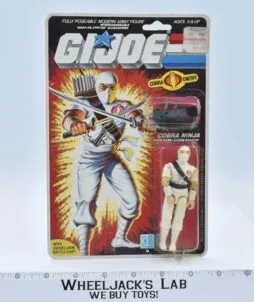
Although G.I. Joe figures released first in 1964 as 12 inch figures, the temporary discontinuation in the late 1970s caused the popularity to fade for a short time. Then, in 1982, Hasbro launched their 3.75 inch figures. These lined up with the same appearance as the Star Wars figures at the time. The original 12 inch G.I. Joe figures featured various branches of the military. The 1982 launch featured more characters with specific military jobs. The figures stuck to a modern appearance with existing military hardware and fictional military hardware to increase imagination for children. The switch for Hasbro from the 12 inch figures to 3.75 figures lead to more collectible opportunities as they were more affordable and featured more characters. Hasbro partnered with the comic book company, Sunbow Productions, to release a paperback illustrated storyline for the new characters.
The five-part animated mini-series to promote the toys and comics released in 1983 and 1984. These resulted from the animated commercials for the toys. The miniseries then led to the animated series of 1985 which brought the new characters to life through an action-packed story. The back story included the characters as an elite military unit. Each character took on a specific job or position at the unit as they defended against the terrorist organization, Cobra. Since the series expanded many more characters to the plot, the action figure toyline also expanded. Many of these characters left an imprint on the decade and years since. Characters such as Snake Eyes, Storm Shadow, Scarlett, Cobra Commander, and Roadblock left an imprint among others. These action figures, vehicles, and accessories with the 1980s cartoon connection set a solid early example to future toylines and animated series combinations.
Transformers (1984)
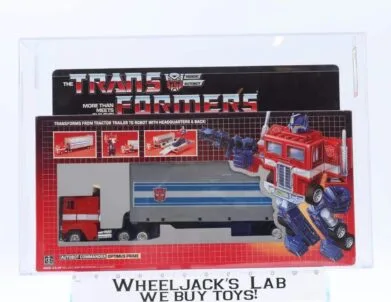
Transformers, the awesome toys and characters that held the power to transform into epic robots made their debut in 1984. The toyline released first, with the animated series releasing shortly after on September 17 of the same year. Transformers toys took direct inspiration from the Diaclone and Micro Change toylines from Takara in Japan. Hasbro tweaked the design and came up with a storyline for the new transforming toys. With the help of Marvel Comics, Hasbro began their Transformers story with popular characters such as Optimus Prime, Bumblebee, Starscream, and Megatron. This storyline then quickly hit the comic book shelves as well as the all-popular cartoon series. All characters divided into two categories, Autobots and Decepticons. The first line of toys, Generation 1, featured a total of 28 awesome transformative characters.
The 1984 animated series lasted four seasons through November 11, 1987. Transformers takes place on planet Earth with the exception of a few trips to Cybertron, the home planet of the transforming robotic creatures. Each character created as a toy and featured in the series developed a backstory fans loved. The good vs. evil characters fighting against each other connected well with their audiences. Along with this, the transformative power and heavy-duty weapons for the bots made fans locked in on the franchise and coming back for more. Without a doubt, Transformers left a lasting legacy among society. Although they are still popular today among collectors and fans with new releases, the 1980s original toys and animated series sparked the incredible popularity.
Thundercats (1985)
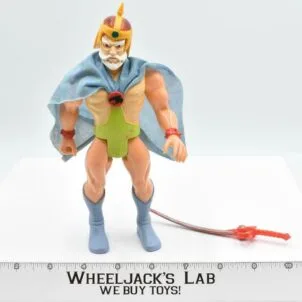
Next up on our 1980s cartoon connection blog, we will mention Thundecats. Both the animated series and the toyline released in 1985, with the series in January and the toys later that spring. The animated series, by Ted Wolf and Rankin/Bass Productions, featured the story of humanoid cat alien characters who fled from their newly destroyed home planet, Thundera. Thundercats proved to hit popularity among its release due to the energetic animation, catchy theme song, and character backstories. The animation appeared more Japanese with a twist of American trends and culture. This series, with animation by a Japanese studio and voice actors of America, featured unique and popular characters. Some of these characters included Lion-O, Tygra, Panthro, Cheetah, and Snarf.
LJN partnered with Ted Wolf and Rankin/Bass Productions to release the toyline. These same characters released as action figures with their popular “battle-matic” feature. This “battle-matic” feature went into play by a lever, allowing the figures to perform specific actions. At the release and years after, this feature kept great popularity for those who owned the toys as they allowed for an interactive and exciting edition to the already cool figures. Each figure allowed children to act out their favorite characters from the enticing plot of the comics and television series. After fleeing from their home world, these humanoid cat characters take base on a planet called Third Earth. The plot centers around the lord of the Thundercats, Lion-O. This character inherits the powerful Sword of Omens and leads his team to battle various enemies along the way.
Teenage Mutant Ninja Turtles (1987)
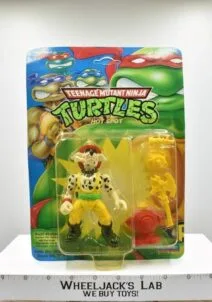
Now, as part of the 1980s cartoon connection, we enter into the world of four awesome anthropomorphic teenage turtle characters. The background of these characters begins with the comic book in 1984 which sparked the inspiration for the animated series which released in 1987. Fred Wolf Films and Murakami Wolf Swenson partnered with the comic book creatures, Mirage Studios, to create the awesome animated series. This series aimed to keep the same characters and setting from the comics but making them less violent and more family-friendly. Each episode featured kid-friendly comedic lines with unique character storylines of intriguing backstories. The five episode miniseries of 1987 grew to a longer series that promoted the action figures well and increased to popularity fast.
The comic’s popularity then sparked the partnership with Playmates for the toyline as well. When the toyline launched in 1988, the company didn’t know the kind of popularity it would see. The toyline showed incredible success with over $1.1 billion USD in sales within the first four years. The first release of toys included Leonardo, Donatello, Raphael, and Michelangelo. Along with these, April O’ Neil, Bebop, Rocksteady, Shredder, Splinter, and Foot Soldier all released in the first wave of figures in 1988.
Then, betwee 1988 to 1997, Playmates produced a whopping 400 figures for the loved Teenage Mutant Ninja Turtles. From this, TMNT figures became the third best-selling toys at the time, behind G.I. Joe and Star Wars. Teenage Mutant Ninja Turtles quickly became a loved franchise that only deepened as years went by. The genius marketing of toys with cartoons in the 80s proved to remain valuable to companies and memorable to fans everywhere.
Final Thoughts
This iconic time period of toys connected to cartoons not only impacted the generation among their release, but also left a lasting legacy that will last for years to come. The inventive marketing strategy used by toy companies and animated studios left both sides showing popularity and promoting the companies. Fans all over grew to love the toys and series even more with the in depth character backgrounds, action-packed scenes, and toys that children could take anywhere with cool features. The cartoon connection craze changed a lot of factors for companies as well as how we see toys and cartoons today.
Do You Have Old and Used 1980s Toys?
If you have a collection of old and used toys, you can turn those toys into cash. There is no reason to let those old toys collect dust. Contact us today to sell your 1980s toy collection.
About the Author
Chris Ingledue is the founder and owner of Wheeljack’s Lab pop Culture and Toy Shop. His vision has always been to reunite customers with their favorite childhood toys and pop culture, triggering fond memories, and reigniting their imaginations. Every day he works in the “lab” where it’s Christmas 365 days a year; scouring the internet – like we did the Sears Catalog of yesteryear – for the next great treasure, awaiting the arrival of the postman as if he was Santa Claus himself and helping collectors worldwide with their own versions of Christmas. For Chris, every day as a vintage toy buyer is an absolute joy!